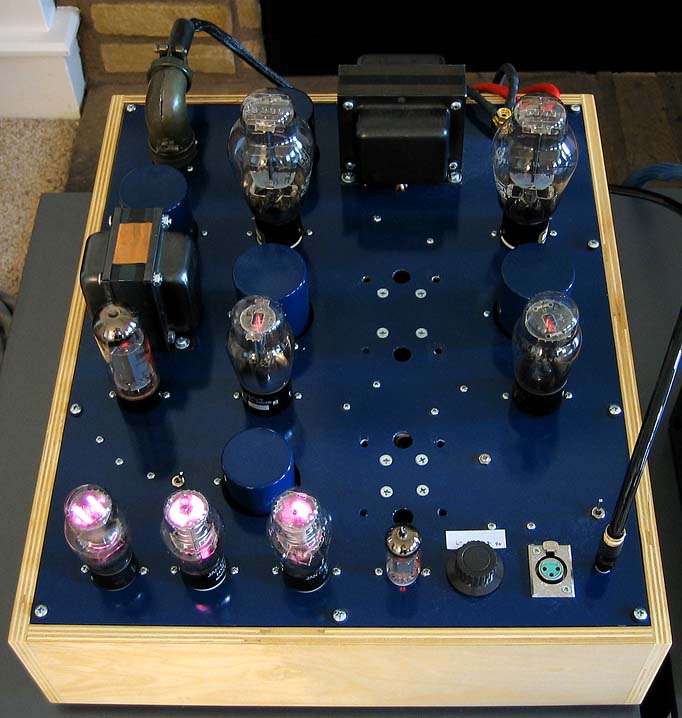The Statements are the previous versions. I strongly urged Don to use a spacious layout, with all components on a single layer. Easier to build and signal-trace. Don ran with the suggestion and improved it by putting all the power supply components on the right side of the chassis, all the audio circuits on the left, with a shield between the two sections.
The wiring for the audio section, in particular, is really simple ... transformers, tube sockets, cathode resistors, and bypass caps. The wire lengths for each half of the circuit are symmetric, while cathode resistors, bypass caps and local grounds go to turret boards next to the tube sockets.
The bigger chassis also run cooler, as you might expect, since heat-emitting components are further apart, and the top plate is now 18" wide. The Blackbirds might look big, but they fit just fine on standard racks.
Sonically, the Statements and the Blackbirds are pretty close. They are all descendants of the original Karna amps, which date back to 2003. Unlike the Karna amps, the Statements and Blackbirds are on two chassis instead of four, which vastly simplifies grounding.
Here’s a picture of Gary Pimm (foreground) and Gary Dahl (background), taken in 2003. The Karna’s have the distinctive blue chassis, and the separate power supply chassis are behind the amplifiers. The AMT-1's are Gary Pimm's speakers.




